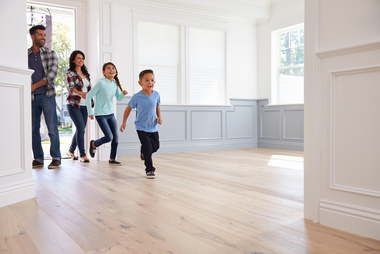When you’re a DIYer, it’s not unusual to have a variety of projects
to work on over the summer. Some projects require warm temperatures and
long days to get everything done, while others just happen to pop up
during the summer months. Regardless of the reason you’re working on
things during the summer, there’s one inevitable truth that you’ll have
to face: It can get really hot when you’re working on things around the
house during the summer months and into early fall.
Obviously, every summer sees higher temperatures than other seasons.
In recent years, though, we’ve experienced some of the hottest summers
on record. Too much heat and sun exposure can cause a variety of serious
health issues including heat stroke and heat exhaustion, so it’s
important to play it safe when you’re working out in the sun. Here are
just a few things that you can do to avoid heat-related problems.
Stay Hydrated
This one should be obvious, but you’d be surprised at how many people
don’t drink enough during the hot summer months. Increase your water
intake before, during and after any periods where you’ll be out in the
heat and sun. As hard as it is to hear, you should also try and avoid
coffee, tea and other drinks with caffeine before going out in the sun
as well, because the caffeine content can actually make you lose more
water. Avoid sugary carbonated drinks and alcohol, though the occasional
sports drink or other beverage with electrolytes won’t hurt, since your
body needs electrolytes for proper functioning, as well.
Take Your Time
Depending on the conditions you’re used to, it can take anywhere from
7 to 14 days for your body to get used to high temperatures. If you’re
going to be working outside a lot in the heat, then you should increase
your heat exposure gradually. If you’re used to air conditioning, trying
to take on a full workload outdoors can significantly increase your
risk of heat-related health problems. Instead, try tackling smaller
tasks with big breaks between until your body gets accustomed to being
out in the sun.
Dress for the Weather
When it’s hot, it’s tempting to wear as little as possible. This can
be a bad idea when you’re working outdoors, though. Not only does less
fabric increase your risk of sunburn but it can also make you more
likely to experience some sort of injury when you’re working. Contrary
to what might seem logical, you should cover up more when working out in
the heat. Cover as much of your skin as possible with light-colored,
lightweight material that’s loose enough that it doesn’t cling to your
body. Choose a fabric that breathes, or clothes made of wicking material
designed to help keep you cool. Don’t forget a hat and sunglasses or
other eye protection, either. Not only will this keep you from getting
burned, but it will also slow down the rate at which your sweat
evaporates (which is a good thing, as it will keep your body cooler than
sweat that evaporates quickly.)
Build Some Shade
One thing that can make a big difference when working outside is
having a little bit of shade to take a break in. In some cases, you’ll
have plenty of trees or other overhangs to create shade for you. If
you’re not that lucky, build a small shelter from the sun using some
posts and a tarp or other material that can block the sun (making sure
that you only cover the top and not the sides to allow for airflow.) If
you really want to maximize the value of this cool-down spot, set up a
fan that you can turn on to create a little bit of artificial airflow,
if there isn’t any breeze when you stop for a break.
Watch for Warning Signs
Common signs of heat-related illness include greater-than-expected
amounts of sweat, confusion, lightheadedness, slurred speech, dry skin,
increased body temperature and loss of consciousness. If you start to
notice any of these issues, get out of the heat immediately and seek
medical assistance, if necessary. Since some of these symptoms can be
hard to identify in yourself, it’s also not a bad idea to have a friend
or family member come check on you at least once an hour to make sure
that you aren’t starting to show signs of overexposure.





























